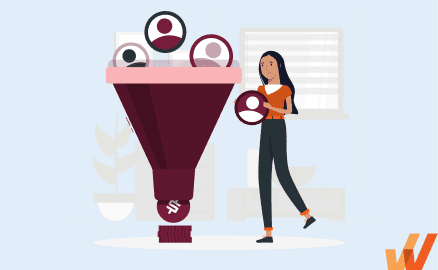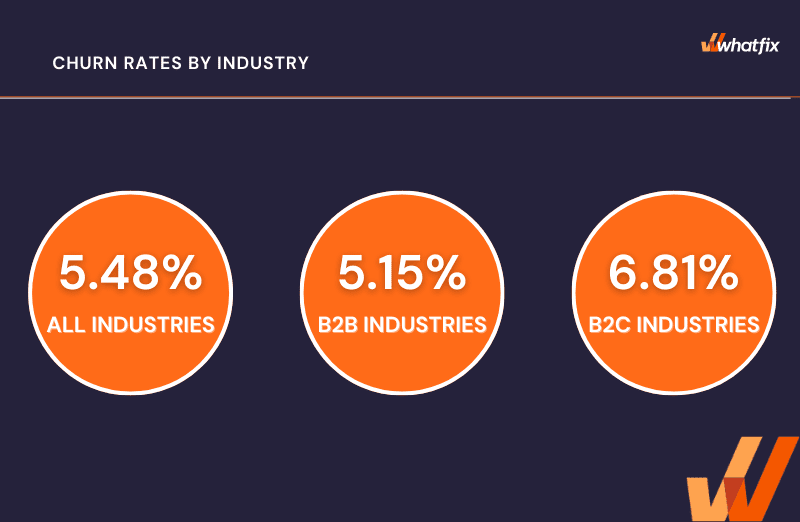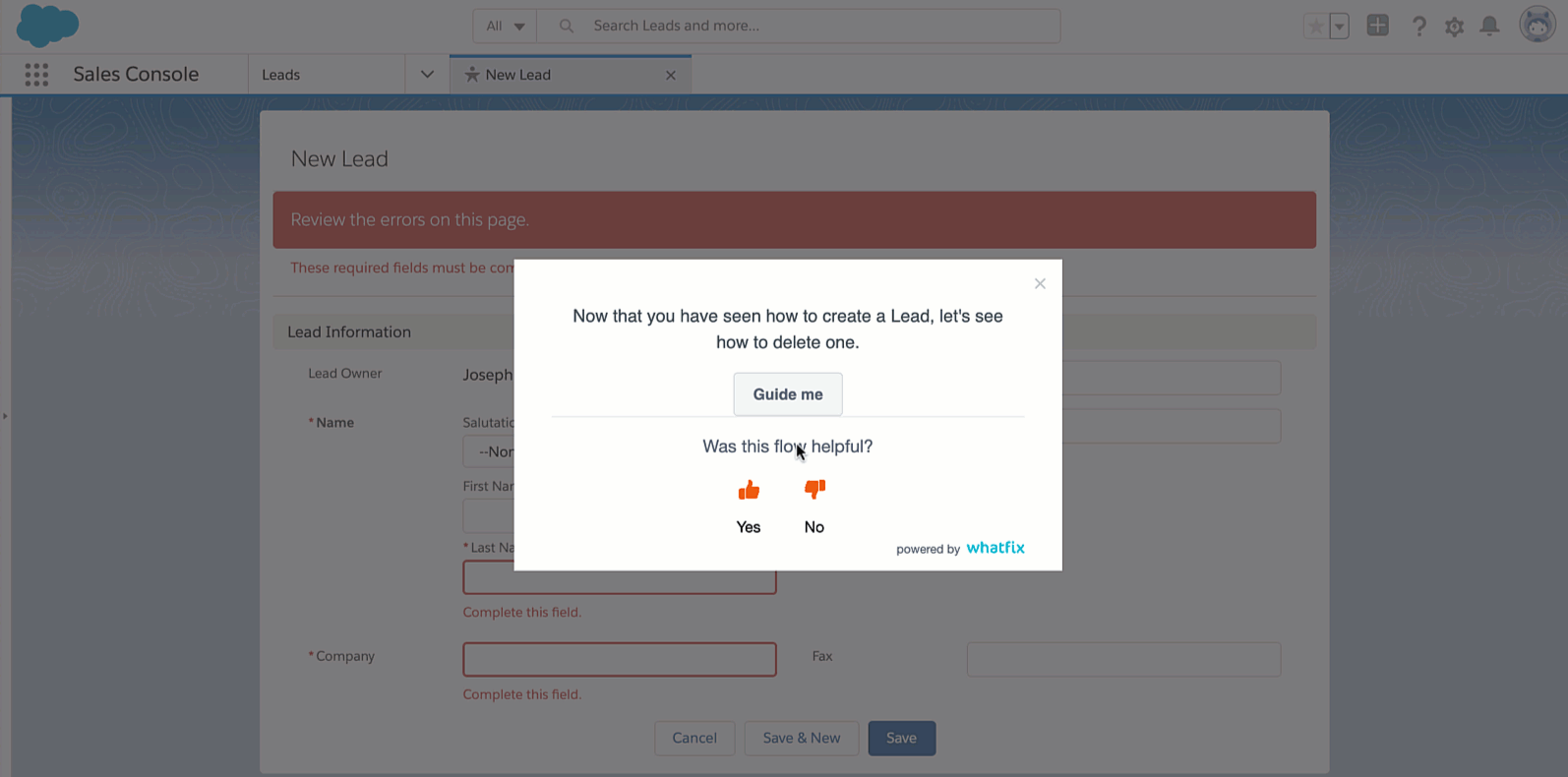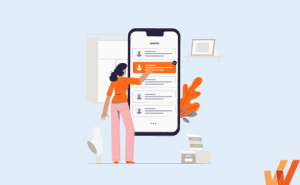How to Predict & Prevent Churn: 7 Factors & Indicators (2024)
- March 30, 2023


Despite larger investments in online communication strategies and cloud-based solutions, 76% of business leaders believe customer engagement will only become more of a challenge. The risks of unengaged users are immense, especially for companies that have just invested in new digital solutions.
When you fail to understand the factors influencing low engagement and poor digital customer experiences, you risk customers churning and losing tenured accounts to your competitors. Higher churn rates inhibit revenue growth, lead to team burnout, and, more importantly, prevent you from realizing a long-term vision.
Let’s explore how companies can minimize customer churn by doubling down on user-friendly digital experiences and visibility into customer satisfaction data.
What are the 7 steps to predict customer churn?
- Data collection
- Data preprocessing
- Model selection
- Training the model
- Integration
- Actionable insights
- Monitoring and refinement
What Is Customer Churn?
Customer churn occurs when a customer stops conducting business with a company. This decision includes actions like canceling a subscription to a service, not renewing a contract, or seizing all purchases and usage of a product or solution.
Churn is inevitable. The needs and priorities of your customers will change over time, and your business isn’t guaranteed a top spot on their list. However, customer churn patterns inform business strategies by helping companies analyze and understand the audiences, use cases, and product journeys they should target.
Companies can’t avoid churn altogether, but they can monitor and manage it. Lenny Rachitsky, author of Lenny’s Newsletter, writes that businesses need to understand what healthy and deathly churn looks like. He features data highlighting how good monthly churn levels can range from less than 0.5% to 5% depending on the type of customer and the product’s price.
For example, costly enterprise software for businesses should see a much lower monthly churn rate than subscription-based software for consumers that costs $10 monthly.
What Is Churn Prediction?
Churn prediction is a company’s ability to spot customers at risk of churning before they actually do. Companies invest time and resources into building effective churn prediction strategies to retain revenue and minimize losses from all fronts.
The end goal of churn prediction is to understand when exactly a customer is expected to churn. From there, companies can prioritize at-risk customers that are valuable for growth and execute personalized strategies that to reengage those customers again.
What Is A Churn Prediction Model?
A churn prediction model is built with machine learning to predict churn with an algorithm training with patterns in historical data.
You can predict churn by looking at how customers behave when interacting with your product and representatives from your team. Companies can collect various data points that indicate frustration, dissatisfaction, or a change in heart in their customers. The algorithm is fed with these data points to analyze how specific input factors may lead to churn as an output.
Companies use churn prediction models instead of relying solely on human-driven decision-making because this technology helps:
- Identify microtrends and subtle patterns that humans can easily miss
- Scale data analysis across thousands or millions of data points simultaneously
- Standardize churn prediction factors and apply them consistently to all customers with less risk of bias and human error
- Reduce resource expenditure on manual and repetitive data analysis work
5 Benefits of Predicting Churn
When companies proactively address churn, they’re setting themselves up to achieve the following outcomes:
1. Retention of valuable customers
A 5% increase in retention can increase a company’s profits from 25% to up to 95%. Churn mitigation can increase customer retention by helping you address friction within your product that pushes customers away. It also gives you early visibility into high-value customers who are becoming disengaged so you can build personalized strategies to make your product necessary in their daily workflows. You can also conduct a retention analysis to discover why customers are churning.
2. Improved customer satisfaction
A lack of product usage, high drop-off rates, and an influx of customer support tickets are all indicators of churn. But more importantly, they’re a sign of low customer satisfaction. When you prioritize prediction, you’re collecting and analyzing data that tells you what’s wrong with the end-to-end customer experience. Ultimately, you get direct visibility into what makes your customers happy, making you even more prepared to implement customer-centric product optimizations.
3. Cost savings
Churn prediction helps companies maximize their revenue from existing customers. It also better informs companies about who to target for long-term customer relationships and what these customers find the most valuable. This visibility allows businesses to lower the cost of acquiring new customers and, more importantly, reduce spending on ineffective marketing campaigns.
4. Competitive advantage
The strategies deployed to mitigate churn will separate the leaders from the pack. Market leaders across industries have one thing in common — loyal customers who advocate for their brand and product.
Renowned brands like Atlassian, Slack, Hubspot, and Shopify don’t just invest in building solutions but in keeping their customers happy. Their relationships with their customers give them a huge advantage in their highly competitive industries.
5. Data-driven decision-making
To reduce customer churn, you need to put your data to work.
From analyzing and comparing the behavior of different user cohorts to narrowing down on in-app journeys and friction points, companies will find themselves equipped with more actionable insights to make better decisions. Customer and product data also helps companies accurately optimize their revenue engine without burning through resources based on assumptions.

7 Factors that Affect Customer Churn
Although there isn’t a one-size-fits-all answer to why churn happens, there are a few common themes that diminish customer relationships across industries:
1. Product or service quality
Products and services that fail to meet customer expectations will push them to seek alternatives with more ideal offerings. Companies with higher retention rates don’t necessarily have the most features. Instead, they assure customers by providing reliable services that meet and exceed outcomes.
2. Price
Budget shifts are one of the more constant factors that lead to customer churn. If your product is no longer seen as a business necessity for your customers, they’re more likely to churn and spend their money elsewhere. Buyers also lose trust in brands that raise prices without warning or an action plan to help them adjust to new changes.
3. Customer support
The reality is that buyers aren’t going to find the perfect product or service to fix all their problems— but they will pay to work with companies with a proven track record of equipping customers with tools and resources to reach intended outcomes. Well-trained customer support teams and self-service support channels are imperative to strengthening buyer relationships.
4. Competitor offerings
We see this every day in highly competitive sectors like retail and software-as-a-service: one company’s offerings can quickly sprout into ten others, each with its own unique twist to attract users. You can’t mitigate churn without tracking what your competition is doing and building strategies to distinguish your product and audience from theirs.
5. Customer engagement
Low engagement typically means customers aren’t adopting your product fully. You might see underutilized features, sporadic logins, and infrequent in-app actions. Companies use digital adoption platforms to encourage engagement by nudging customers toward an “aha!” moment that reinforces their purchase decision.
6. Customer experience
Beyond the quality of a product or service, people want to feel empowered and productive when they use their favorite tools. A strong customer experience sets buyers up for success right from day one. Effective onboarding and customer education, intuitive UX, and reliable support are all factors that contribute to less in-app friction and more satisfied customers.
7. Life changes
Personal circumstances or unexpected challenges can impact a customer’s ability to commit to a product or service. We saw this during COVID-19 when many small businesses cut back on tools and services even if they were delighted buyers. Providing customers with flexible or customizable options can help maintain these relationships until they achieve more clarity or normalcy.

How to Predict Customer Churn
Here’s an overview of a simple step-by-step process to preparing your customer data infrastructure for churn prediction:
1. Data collection
Collect historical data about how different groups of customers interact with key actions within your product. For example, companies use Whatfix’s digital adoption platform (DAP) to track user actions like clicks, mouse hovers, and drop-offs in product journeys. The tool gives teams insight into customer experience gaps that may lead to low product adoption and subsequent churn.
2. Data preprocessing
Once data is collected, it should be cleaned and sorted to remove missing, duplicate, or irrelevant information. Inconsistent data makes it harder for teams to format data in a way that machine learning algorithms can understand. Unsorted data also leads to more inconsistent information that will impact the output of your churn prediction model.
3. Model selection
The model you choose will depend on the nature of your business and the volume of customer data included in churn prediction calculations. Common types of models include logistic regression, support vector machines, and decision trees.
For instance, companies dealing with large volumes of data could use a logistic regression model because it’s easier to train and get off the ground running.
4. Training the model
After selecting a suitable model, companies will need to train the model using a set of preprocessed data. This data should accurately represent the data you want your churn prediction model to work with moving forward. Your churn prediction model will then learn the relationships between different variables and how they contribute to the likeliness of churn.
5. Integration
When your model delivers the right outcomes, you can integrate it into your organization’s technology stack. The model should sync with your tools to monitor, analyze, and act on product and customer data. This includes customer support software, customer relationship management (CRM) platform, digital adoption platforms, and project management tools.
6. Actionable insights
A well-integrated technology stack will give you complete visibility of your end-to-end customer experience. Create workflows and automation that make it convenient for your team to generate custom reports, filter through user segments, and deploy targeted content and optimizations. If your model identifies high churn risk for specific customers, you should be able to view what actions led to that classification and make informed decisions about mitigation strategies.
7. Monitoring and refinement
As your customer base grows and your product becomes more complex, the variables influencing churn might change over time. Your team should factor in regular checkpoints or milestones to assess the quality of your churn prediction models and identify opportunities for improvement. You may need to retrain your model with a different set of data or optimize the model by factoring in more customer data.
5 KPIs and Metrics to Predict Customer Churn
The good thing about churn prediction is that it’s an agile initiative you can customize according to how your business interacts with users. A mix of qualitative and quantitative data will help you build a complete picture of what individuals do or say when they lose interest and trust in a product. You can use these data points in your calculations:
1. Customer lifetime value (CLV)
CLV estimates the revenue a customer can generate for your business throughout the relationship. Companies calculate CLV by looking at the cost of acquiring and retaining a customer, the value and frequency of purchases, and the potential for sales referrals and expansion. Customers with higher CLV can be less likely to churn because they have more investments in your solution or service. You can also prioritize these customers in churn mitigation efforts.
2. Customer engagement
Customer engagement measures how actively customers use a service or solution in their day-to-day workflows. High engagement indicates that a customer maximizes the product’s potential and finds a value-add to their work.
You can measure customer engagement by looking at the types and frequency of actions taken within a product, like completing a purchase, submitting a ticket, or opening a project. Conversely, low engagement signals that customers are not using your product and are more likely to churn.
3. Purchase history
Purchase history tracks how customers buy products and services with your business. Capturing purchase history gives you visibility into purchase frequency, types, and value. You can use this data to deduce and predict behavioral changes in your customers.
For example, a customer may be dissatisfied with a product and in search of an alternative if they start reducing their frequency of orders. On the other hand, declining purchase value could also indicate a shift in your customer’s budget and priorities.
The earlier you spot these trends, the faster you can create a strategy that meets your customer’s needs without losing them completely.
4. Net promoter score (NPS)
NPS measures customer satisfaction regarding how likely the customer would recommend a business to those around them. An NPS score is one of the most common indicators for customer churn because it’s direct feedback that clearly showcases how a customer feels about a company’s quality of service. Typically a lower NPS score translates to customers that are less loyal and less engaged.

5. Customer service interactions
Customer service interactions monitor how often a customer reaches out to a company’s customer service team for support. Different kinds of interactions and metrics can be tracked depending on the nature of a business, including the number of support queries each customer has, the types of requests submitted, or the time taken for those tickets to be resolved. If a customer has an abnormally large number of customer service queries, it can indicate poor user experience or inadequate onboarding and training.
Narrowing down on customer service interactions helps companies proactively address customer pain points before it’s too late to change their mind.
7 Churn Prediction Use Cases
Churn prediction is important across all industries that depend on engaged customers and employees. But each industry has a nuanced approach to applying customer churn insights to revenue-generating initiatives.
Here are a few examples of how churn prediction influences daily business operations:
1. Telecommunication
Companies use churn prediction to prevent customers from switching to a competitor’s telecommunications network. To stand out in the mark, telecommunications providers today use AI technology to power advanced capabilities like personalized customer support and automated network protection. Monitoring churn gives these companies a better understanding of strategically applying technology in areas that will significantly improve customer service.
2. Software as a service provider (SaaS)
Companies use an average of 250 apps across their entire organization. However, less than half of these app users are actually engaged. The earlier companies can flag customers with poor app usage, the more feedback and data they can collect about in-app friction and overall brand satisfaction. These findings can enhance popular churn mitigation strategies like assigning dedicated account managers, deploying intuitive customer support content, and providing loyalty incentives.
3. Retail market
Retailers use customer behavior data like website interactions and purchase history to power targeted campaigns that bring customers back to their brand. You’ve probably been on the receiving end of personalized ads and recommendations on social media or e-commerce platforms. Churn prediction gives retailers visibility into factors that come into play when buyers engage with products, promotions, and rewards.
4. Subscription-based businesses
Like retailers, subscription-based businesses also commonly use churn prediction to deliver personalized recommendations and content. For example, software tools can do more for their retention numbers by staying on the pulse of how customers interact with different in-app elements and buttons. Identifying drop-offs and points of frustration makes it easier for product teams to remove any product friction preventing customers from taking the next step.
5. Financial institutions
Customer service, tailored offerings, and rewards are some of the biggest differentiators between finance organizations. From mobile banking to AI-powered financial planners and customizable budget tracking tools, digitization is a key driver of customer growth and retention.
Keeping tabs on customer churn rates helps institutions maintain and improve the speed and quality of their digital experience. It also gives stakeholders clear KPIs to track and measure the success of digital transformation efforts.
6. Marketing
Customer churn is a critical source of information for marketing teams to up the quality of outreach campaigns, ad placements, and product messaging. Companies can ensure they prioritize at-risk customers when announcing exciting new features and brand improvements. Teams can also narrow down on specific user cohorts for targeted multi-touch email sequences and omnichannel engagement to combat early warning signs for churn, like low product usage and incomplete actions.
7. Human resource management
HR teams can boost employee satisfaction and retention by having tangible data to measure the employee experience and culture.
For example, companies often use employee engagement surveys to pinpoint the factors influencing a decision to take up an offer from another company. Churn prediction models can surface gaps like a lack of learning and development opportunities, poor workplace culture, disorganized knowledge management, or a lack of trust in managers and leaders.
6 Challenges of Predicting Churn
Like most business forecasting strategies, churn prediction relies heavily on data accuracy and consistent processes. Staying on the pulse of customer interactions can amount to a lot of data. Turning this data into forward-looking insights can be daunting if companies aren’t prepared to face the following challenges:
1. Data quality and quantity
Churn prediction is a data-driven strategy that succeeds because it effectively analyzes the relationships between different customer factors. But if you feed your churn prediction model with inaccurate or incomplete data, it will return less applicable and impactful outcomes for your retention efforts.
2. Model complexity
Like any initiative powered by advanced AI-driven technology, it takes deep expertise and sufficient resources to execute quickly. Organizations in highly competitive, complex, or niche industries may need more comprehensive techniques to train their models to reach deeper levels of predictive analysis. This takes up time, headcount, and technology costs.
3. Time constraints
You can’t implement churn prediction models if they’re not trained, tested, and validated. A comprehensive process comes into play when collecting, cleaning, and processing customer data. Companies need to plan ahead and set reasonable timelines for conducting these activities so they don’t delay retention initiatives.
4. Limited customer feedback
Your churn prediction model needs customer data to forecast behavior effectively. But when data depends on customer feedback and responses, companies are held back if not enough buyers engage with surveys or disclose their reasons for churning. Heat maps and digital adoption platforms like Whatfix are a few ways product teams collect actionable behavioral data from customers without asking and waiting for feedback directly.

5. False positives and false negatives
No technology is perfect. Churn prediction models can sometimes predict churn for customers who don’t actually churn or fail to predict churn for customers who do. To avoid these risks, teams diversify their strategy and strengthen churn prediction with ongoing visibility into product journeys and engagement with product support and education content.
6. Business integration
If your churn prediction models and platforms aren’t in tune with existing workflows, your team will spend unnecessary time and effort addressing tedious administrative and technical mishaps. The tools you use to collect and analyze data should be seamlessly integrated into your product while adding to the convenience of your product and data teams.
Stay ahead of the curve by using Whatfix to analyze user interactions and flag behavior that indicates higher churn risks. Analyze customer actions like clicks, mouse hovers, and interactions with support content to pinpoint friction and ineffective user experiences.
Optimize your product journeys with interactive, personalized content that help users solve problems and gain expertise independently. Whatfix also empowers customers with in-app resources like beacons, smart tips, and pop-ups to nudge customers toward valuable features that boost engagement.
Learn more about how to optimize your customer journey with Whatfix today.
- Customer Effort Score: 16 CES Questions to Ask (2023)
- 13 Must-Track Customer Experience KPIs & Metrics (2023)
- 10 Best Customer Retention Software (2023)
- What Is User Retention? How to Measure & Improve It (2023)
- How To Improve & Measure Your Customer Health Score (2023)
- Time To Resolution: Why It Matters & How To Reduce It

Thank you for subscribing!


